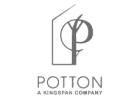You can read a magazine online or a book on a mobile device, but you can’t use a website to decorate a lorry or package an LP, so many B2B print applications are unlikely to be filched by the internet.
 You can read a magazine online or a book on a mobile device, but you can’t use a website to decorate a lorry or package an LP, so many B2B print applications are unlikely to be filched by the internet
You can read a magazine online or a book on a mobile device, but you can’t use a website to decorate a lorry or package an LP, so many B2B print applications are unlikely to be filched by the internet
If you’re reading this article in its print-on-paper form, you are, of course, holding a piece of business-to-business print in your hands. But you might be in the minority. For B2B magazine publishers are one of the most notably challenged areas of publishing, with a plethora of titles switching to an online-only model.
But, luckily for printers, other areas of B2B printing are holding up better in this digital age. And so B2B printing looks set to continue to be a mainstay of many printers’ workloads for years to come.
Take vehicle wraps. As our profile below on the Stobart Group shows, a relatively straightforward use of print as a powerful branding tool has helped propel this company into a position where it is a household name, 15th in fact in the latest Business Superbrands survey, ranking higher than giants including DHL, BT, Shell and Vodafone.
Then there are glossy customer magazines, produced to convey the manufacturing excellence of the likes of Rolls-Royce, which held the top spot in this Superbrands survey.
Then, of course, there’s direct mail, still used to a huge degree, even by companies synonymous with the digital world, such as Google, which ranked second in the brand survey. This makes for an interesting and persuasive case study in showing print’s enduring value to businesses. Google turned to direct mail when it wanted to target 5m B2B customers in 42 countries.
And in the USA, Google has been piloting a transactional statement for users of Google Adwords, comprising a distinctive, square-shaped mailing containing information on the customer’s individual usage, along with ideas about ways to gain increased value from the service.
“People paid attention to the paper that showed up, not the email,” says transactional print expert Pat McGrew.
So, as the following profiles show, print is certainly continuing to do exciting and innovative things in the business world.
The Vinyl Factory
Records are on the up, with a growing band of aficionados appreciating the medium’s many distinct advantages over CDs and digital music channels. The Vinyl Factory, which has a pressing plant in Hayes and gallery spaces in Soho and Chelsea, was founded in 2001, and the business inherited the equipment of the former EMI Records pressing plant.
“Through our expertise, artists continue to crystallise their music into the most coveted vinyl editions on earth,” states the company on its website.
Creative director Sean Bidder describes the right choice of print as being “intrinsic” to the appeal of the finished record.
“We are dealing with individuals, managers and record labels,” he says. “Print is very important to vinyl culture. It’s an intrinsic aspect of the physicality of the record. For our own label, print is especially important.
“Vinyl is defined by the sound, the record and its sleeve. We view the sleeves as an art edition, in the same way as fine art printing. We want to be as creative as possible and we get very involved with the artists. Some design their own sleeves, some even paint them.
“The print element becomes very important and we take our cues from fine art printing. We work with different printers on different types of project, but we’re working with people who approach it like craftsmen, in the same way as we do. It’s no longer mass-production.
“It’s really a mix between standard commercial printing and bespoke craft techniques. Some of our limited-edition runs present an opportunity to use more craft-oriented printing.
“We did a series of four limited edition records for Florence + The Machine where the covers were screenprinted with gloss UV and then foiled. The whole thing was stunning.
It all depends on what you’re trying to create. Some images replicate best with litho. We’ve also done giclée digital printing as part of a limited edition where we wanted to capture a high level of detail.
“We also produce limited-edition prints and screenprinting works well for us for this, on a broader range of materials.
“A project for Jamie Hewlett involved PVC flooded red and then printed with black. The result was very vibrant and super colourful. We often have unusual requirements and we want to work with people who are open to that.”
Stobart Group
How many businesses have their own fan clubs with thousands of members? This one does. Think of Stobart and the immediate image is that of one of the group’s distinctive lorries, emblazoned with the name of Eddie Stobart, who founded the business 42 years ago.
Today, Stobart Group’s ‘multimodal logistics’ offering spans road, rail, ports, airports and warehousing, and two years ago it expanded into a new area, the sourcing of biomass fuels.
But Stobart is best-known for the group’s iconic trucks, which helped build what the firm itself describes as “one of the most recognised and strongest brands in Britain”.
The group has some 2,500 trucks in its fleet, all adorned with the distinctive printed Eddie Stobart curtain sides and green cab graphics, and each bearing a different girl’s name – something that keeps the legion of “Stobart Spotters” busy. Spokesman James Andrew says the rolling stock is constantly being replenished with new trucks, with each vehicle remaining on the fleet for around three years. “They arrive, and we brand them up, and they remain like that throughout,” he says.
Brilliant, but simple and very effective.
The wrapping of one of Stobart’s new Scania trucks “Sarah Emily” takes almost six hours.
ExCel London
ExCel London, the international convention and exhibition space, located in London’s Docklands, will become a more familiar location to the printing industry over the next couple of years, with Fespa 2013 and Ipex 2014 exhibitions both choosing the venue.
ExCel is home to more than 100,000sqm of event space, and was a venue for the London 2012 Olympics and Paralympics. Other major events located at ExCel include the London Boat Show.
Keith Clifford, marketing manager, exhibitions and digital, explains how the centre is using print in high-profile and highly-practical ways.
“We do quite a lot of printing. Our banner and poster sites are used a lot of the time by the event organisers or specific exhibitors, but we use them for in-house messaging too, or advertising local business attractions.
“We have nine 96-sheet poster sites, seven inside and two outside, and 400 different poster sites across the venue, so there are a lot of branding opportunities.
“People have also done wraps for various parts of the venue. We had an event where they wrapped a section of the glass pyramid at the front of the ExCel, and people can do other things too.
“At the centre of the venue there’s a big plasma screen and the surround has been wrapped. Wrapping is increasingly being used; for example, at our new eastern entrance there’s a glass entrance and walkway and people have wrapped that too.
“We have our own print suppliers but we do have situations where exhibitors want to print their own things, in which case we’ll install them. Banners are always very popular and very effective.
“For ExCel’s own marketing print we mostly do targeted bespoke packs, for example bid documents, because we are producing something that’s much more targeted than a general mailer as we’re targeting a core list of clients.
“We ran a campaign recently focused on the motor industry, which involved sending out personalised metal licence plates. The intention was to draw attention to the venue. It had the recipient’s initials plus ‘VIP’, and encouraged them to take a fresh look at ExCel. We’ve definitely had some good results from it.
“Print has moved on a bit from paper and it makes a lot of things possible, although something we consider to be our ‘Bible’ is a straightforward brochure. That’s our major piece of mass-produced print. It contains all the vital statistics about the venue, all the dimensions of the available spaces – heights, capacities, layouts and sizes. It’s widely used by organisers and exhibitors because it’s just so handy to have all the information to hand.
“We’re just embarking on a big project, which is to produce city guides for London for 12 large upcoming events, including Fespa and Ipex. These will be very similar to the Drupa guides and will have information and offers for bars and restaurants, and other attractions.
“We’re looking at a 90pp DL format and we’ll be printing something like 100,000 of these guides next year. It’s something we believe will be really useful for exhibitors and visitors. It’s something tangible, people will have it in their hands.
“Everything we print is of value, either for potential business or to an existing client. Print works well for us; it’s a good part of our marketing mix.”
Source: printweek.com































































